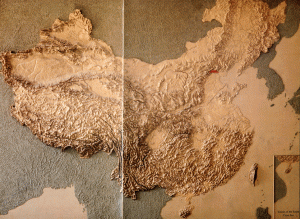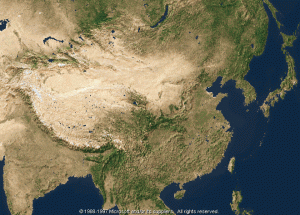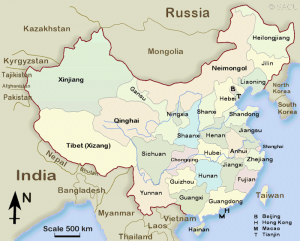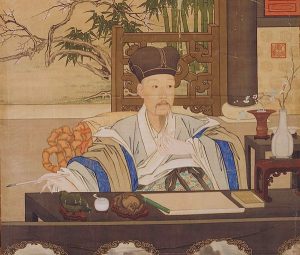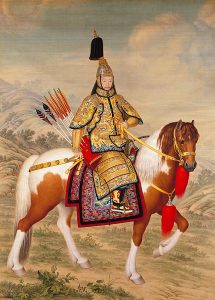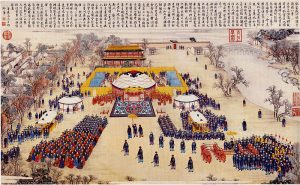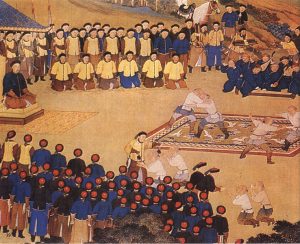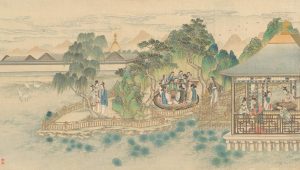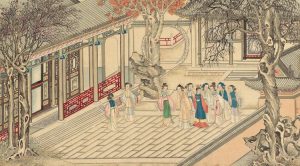I. Cultural Reorientation
- “Evidential learning” (kao zheng)—Huang Zongxi 黃宗羲 (1610–95) … Gu Yanwu 顧炎武 (1613–82) … reactions against Wang Yangming (1472–1529)
- Conservative turn—faithful widows . . . women’s writings
- Dream of the Red Chamber 紅樓夢 (Hong lou meng) (1791)—Cao Xueqin (1715–64). . . Jia family
II. Internal Concerns
- Qianlong and Heshen (800 million ounces of silver)
- White Lotus rebellion (1796–1804)
III. External Concerns
- Age of Enlightenment—Gottfried Wilhelm Leibniz (1646–1716) . . . Montesquieu (1689–1755) . . . Voltaire (1694–1778)
- Qing’s “Foreign Relations”—Department of Imperial Household (European missionaries) . . . Office of Border Affairs (Lifan Yuan 理藩院 [1638]; the northern and western borders) . . . Ministry of Rites (Korea and other neighboring countries; borderland peoples) . . . Illustrations of Tributaries 職貢圖
- The “Canton System” (1757–1842)—British East India Company (1600–1874) . . . Gong hang 公行 (Cohong, “combined merchant companies”) (1720)
- Tea trade—400,000 pounds (1720) to 23 million pounds (1800) … silver (3 million ounces in 1760s to 16 million in 1780s)
- George Macartney Embassy (1793)—envoy to Russia (1764) and governor of Grenada (1776–79) and Madras (1781–85) . . . man-of-war with 66 guns (2 support vessels) . . . nearly 100 scientists, artists, language teachers, etc.
- “As your Ambassador can see for himself, we possess all things. I set no value on objects strange or ingenious, and have no use for your country’s manufactures” (The Qianlong Emperor, “Edict to King George III,” September 1793).
- “In my researches I often perceived the ground to be hollow under a vast superstructure, and in trees of the most stately and flourishing appearance I discovered symptoms of speedy decay, whilst humbler plants were held by vigorous roots, and mean edifices rested on steady foundations. The Chinese are now recovering from the blows that had stunned them; they are awaking from the political stupor they had been thrown into by the Tartar impression, and begin to feel their native energies revive. . . . In fact the volume of the empire is now grown too ponderous and disproportionate to be easily grasped by a single hand, be it ever so capacious and strong. It is possible, notwithstanding, that the momentum impressed on the machine by the vigor and wisdom of the present Emperor may keep it steady and entire in its orbit for a considerable time longer; but I should not be surprised if its dislocation or dismemberment were to take place before my own dissolution” (George Macartney, An Embassy to China).
V. Legacies of the Eighteenth Century
- Demographic and territorial expansion
- Involutionary trap / Great Divergence
Discussion
- The letters from the Qianlong emperor might be obvious. But whom were George Macartney writing to (for)?
- How would you explain the sources of tensions?
Maps
Physical Map
Source: National Museum of Chinese History, ed., A Journey into China's Antiquity, vol. 1 (Beijing: Morning Glory Publishers, 1997), pp. 8–9.
Physical Map by Satellite
Administrative Map
Source: SACU

